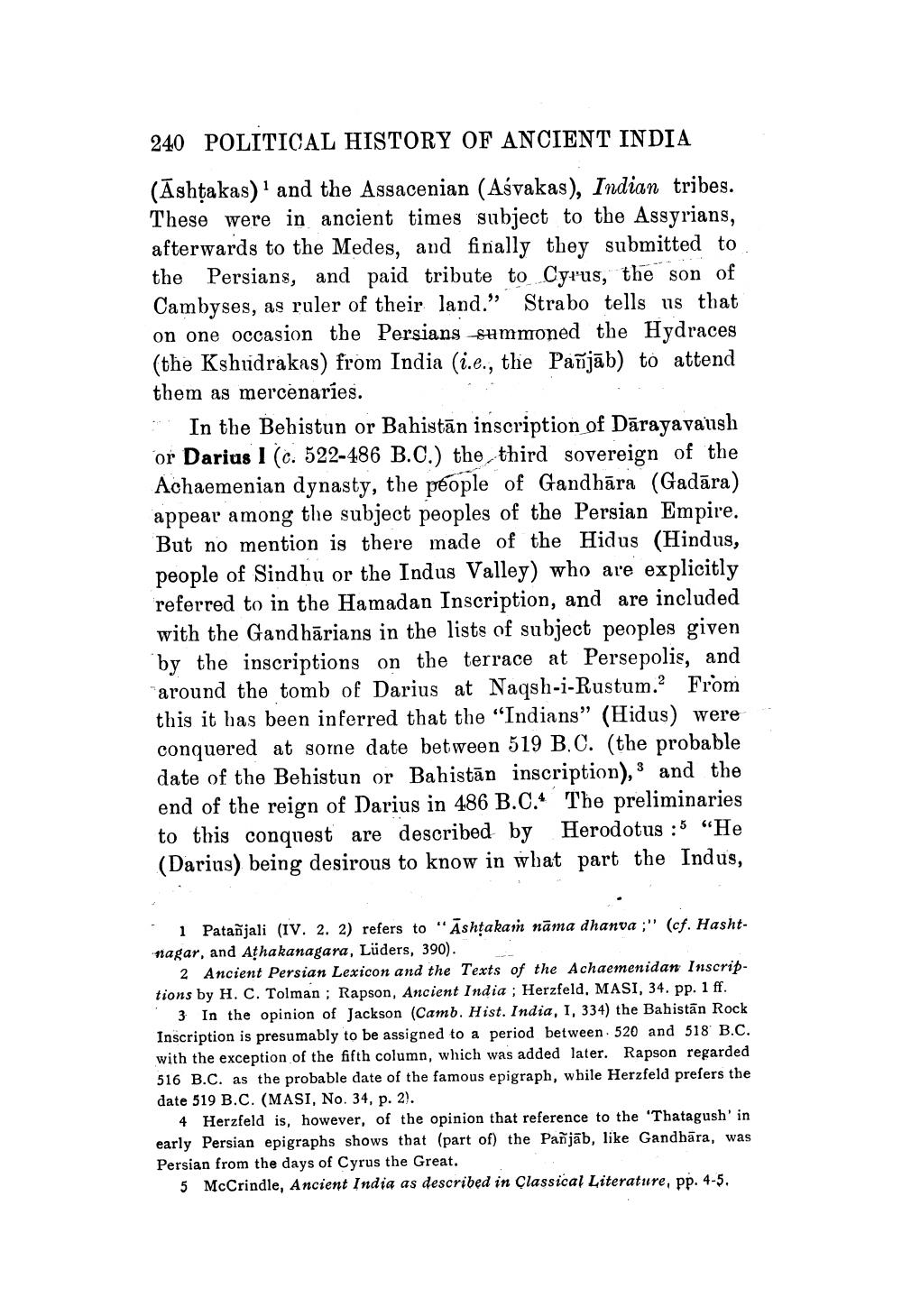________________
240 POLITICAL HISTORY OF ANCIENT INDIA
(Āshtakas) and the Assacenian (Ašvakas), Indian tribes. These were in ancient times subject to the Assyrians, afterwards to the Medes, and finally they submitted to the Persians, and paid tribute to Cyrus, the son of Cambyses, as ruler of their land." Strabo tells us that on one occasion the Persians summoned the Hydraces (the Kshudrakas) from India (i.e., the Pañjāb) to attend them as mercenaries. ** In the Bebistun or Bahistān inscription of Dārayavansh or Darius I (c. 522-486 B.C.) the third sovereign of the Achaemenian dynasty, the people of Gandhāra (Gadāra) appear among the subject peoples of the Persian Empire. But no mention is there made of the Hidus (Hindus, people of Sindhu or the Indus Valley) who are explicitly referred to in the Hamadan Inscription, and are included with the Gandhārians in the lists of subject peoples given by the inscriptions on the terrace at Persepolis, and around the tomb of Darius at Naqsh-i-Rustum. From this it has been inferred that the "Indians” (Hidus) were conquered at some date between 519 B.C. (the probable date of the Behistun or Bahistān inscription), s and the end of the reign of Darius in 486 B.C. The preliminaries to this conquest are described by Herodotus :5 "He (Darius) being desirous to know in what part the Indus,
1 Patañjali (IV. 2. 2) refers to “Ashtakam nāma dhanva ;" (cf. Hashtnagar, and Athakanagara, Lüders, 390).
2 Ancient Persian Lexicon and the Texts of the Achaemenidan Inscriptions by H. C. Tolman ; Rapson, Ancient India ; Herzfeld, MASI, 34. pp. 1 ff.
3 In the opinion of Jackson (Camb. Hist. India, I, 334) the Bahistān Rock Inscription is presumably to be assigned to a period between 520 and 518 B.C. with the exception of the fifth column, which was added later. Rapson regarded 516 B.C. as the probable date of the famous epigraph, while Herzfeld prefers the date 519 B.C. (MASI, No. 34, p. 2).
4 Herzfeld is, however, of the opinion that reference to the 'Thatagush' in early Persian epigraphs shows that (part of the Pañjāb, like Gandhāra, was Persian from the days of Cyrus the Great.
5 McCrindle, Ancient India as described in classical Literature, pp. 4-5.




